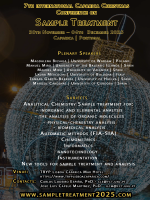Extraction and purification of the lectin found in the tubers of Eranthis hyemalis (winter aconite)
DOI: 10.5584/jiomics.v1i2.72
Abstract
Lectin are proteins which play an important role in the defence mechanisms of plants against the attack of microorganisms and insects: this role has provoked particular interest in the fields of biotechnology and agriculture. This paper describes the extraction and purification of the lectin found in tubers of the winter aconite (Eranthis hyemalis), with the aim of improving and modernising the existing extraction protocol. The Eranthis hyemalis lectin (EHL) is a member of the type-2 Ribosome Inactivating Proteins (RIP) family, proteins which have the ability to inhibit in vitro protein synthesis. RIPs have been linked to plant defence by their antiviral, antifungal and insecticidal properties, and some have been found to be potent inhibitors of the Human Immunodeficiency Virus-1 (HIV-1) virus. EHL was purified using affinity column chromatography and ammonium sulphate precipitation; thiourea was used as antioxidant in order to prevent EHL denaturing during the extraction process. The presence of EHL in the extract was verified using a blood agglutination test with rabbit erythrocytes. Sodium dodecyl sulphate polyacrylamide gel electrophoresis (SDS-PAGE) analysis was employed to determine the lectin size; EHL was found to be formed of two chains with molecular weights of approximately 31 kDa; the size of the whole protein was estimated as approximately 60 kDa. The concentration of the EHL in the post-column eluent, determined using the Bradford Assay, was 380.1 μg.cm-3. This improved extraction protocol is the first step which will enable future research on the potential use of EHL in crop protection, by studying its insecticidal, fungicidal and bactericidal properties.









